Sunny Sanyal is CEO of T-System of Dallas, TX.

Let me ask you the obvious question first. You were president of McKesson Provider Technologies until recently. How do you feel about what you accomplished there?
I was there for a little over six years. I had a great time and accomplished a lot.
I started back in 2004. This was about the time when Horizon Clinicals components were being introduced to the market. I feel like I had a great run. I had introduced a lot of new products, created a successful clinical footprint in the industry, and then it was time to move on.
I’ve always worked in big companies like McKesson. I worked at GE until it was time for me to go out on my own and do something different. I wanted to be in an industry where the company is a market leader, with a strong reputation, with good products, and where there’s market momentum.
That’s why I picked T-System. It’s a good, solid company, perfect products, and the ED is extraordinarily active right now. It made a lot of sense from a market perspective. It’s one of the last green field areas in healthcare IT. I feel really good about this transition and I’m enjoying it.
How different do you think it will be running a company instead of a corporate division?
It is very different in many ways. First and foremost, in a large company, you’re part of a divisional president’s role. There are a number of things that are already in place for you. The infrastructure is there. There’s a much larger portion of your time is spent in communications, communications up and down, horizontally, bringing people along.
In a smaller company, the time from thought to decision to action is extraordinarily short. I come up with an idea, I take a few minutes for us to get a bunch of people together and discuss what we’re going to do, and then immediately actions are taken. I find that extremely exhilarating. That aspect of a small company I’m really enjoying.
T-System is doing well as a company. It has very happy customers, so it makes for a very nice work environment where I can sit back and think and take time to make the right decisions.
Before Meaningful Use, ED wasn’t much of a conversation starter, but now everybody is talking about it. What are your thoughts on how the ED and ED information systems fit with Meaningful Use?
It’s been a rollercoaster ride. Initially, there was no mention of ED as a place of service applying to the Meaningful Use metrics. Then it looked like ED was in all the way. That meant hospitals could on make their Meaningful Use, especially for Stage 1, with just ED alone. At the same time, for those without an EDIS plan, there was no way for them to make their Meaningful Use metrics.
But now we’re stopped a halfway mark, where the patients that are transferred from the ED into inpatient are the ones that count towards the metrics.
Here’s the effect as I see it. Most hospitals were fairly behind in terms of their plans for an ED information system. They had been giving the inpatient automation a much higher priority. But when the second revision of the Meaningful Use criteria came out, it just caught everyone off guard, both from the vendor’s side and from the hospital’s side. Everyone all of a sudden had to scramble to change their plans to create an ED IT strategy pretty quickly.
Now that’s it’s been pulled back at the halfway mark, I think most hospitals that didn’t have a plan are taking a little bit of a breather, taking a sigh of relief. But at the same time, they realize that sooner or later with Stage 2, they’re going to have to deal with this, so they might as well start thinking about how the ED plays a role in their IT strategy.
I think for us, from a market perspective and T-System perspective, we’ve done exactly the right things. We wanted the market to go active, and at the same time we want the CIOs and IT organizations and the hospital executives to think about what they’re doing with the ED — think a little bit about what’s the right way for them to enable collaboration of care across the enterprise and collaboration of information sharing across the enterprise. For me, I believe that for T-System, we had a good positive impact.
Everybody who’s trying to make a case for interoperability always drags out the example of the unconscious patient in the ED, which then implies there’s probably some benefit to tying the ED in with the community-based systems out there for physician practices for allergy information or past medical history. How do you feel that plays out, and what are your strengths and weaknesses as a standalone ED systems vendor?
Meaningful Use was intended to facilitate collaboration of care across the community — all settings of care — and allow the community-based systems to connect with the inpatient and ED-based systems.
The way we see it is, when do you draw the line? If you’re a CIO at a hospital, what constitutes inside your circle for the enterprise system versus an outside? Whether the ED is part of the enterprise system or ED is part of the best of breed. It’s not about just the ED. It’s about the ED, it’s about oncology, it’s about other departments, it’s about the community physicians, and it’s about skilled nursing facilities and the LTACS.
At the end of the day, we know as a best-of-breed vendor that we absolutely have to go overboard and over-deliver on being open and providing interoperability capabilities. That’s the focus of our product road map — to be able to accept information coming from outside, not just problems and allergies and meds, but pretty much the entire medical record. Anything from the medical record that needs to be transferred in, we need to be able to accept that.
At the same time, we need to be able to provide that going back out in multiple formats — in whatever format other institutions want it and codified. So as a best of breed vendor, our focus is squarely on making that happen and making that the priority for us.
T-System had an investment earlier this year from Francisco Partners. It was interesting then that Ingenix bought Picis. What do you think that means overall for the industry in the place of companies like yours, and how does that change Picis as your competitor?
The investment from Francisco Partners essentially allows us to continue on as a best-of-breed vendor. They made an investment because they see a growth opportunity in the ED. They see a company that has a various, large customer base that has a potential to provide more add-on solutions into the base and migrate at the base EDIS solutions. It was a decision based on T-System as a company, based on the market — a number of criteria.
In terms of Picis as a competitor, the acquisition by Ingenix — I can’t comment on that in terms of what led to it or the pros and cons of that. As far as a competitor, they’re still the exact same competitor they were before. I don’t think the Ingenix factor or acquisition has changed much for us from that perspective.
When you look at companies quickly trying to get foothold before the window closes on what everybody thinks will be a bunch of purchases that are fueled by the HITECH act, how do you see companies financing going forward? Do you think there will be more private equity? Do you think companies will merge or will they go public?
I’ll use examples that I’ve seen in the industry over the years. For best-of breed-vendors, there are only two roads. Either you get a tremendous amount of market share and you’re successful as a best-of-breed vendor, or you’re small and your sub-scale and you need to merge with others in order to get scale, and ultimately you end up getting acquired. I’ve seen that happen several times.
We’ve seen that in the radiology space. There were a lot of PACS vendors. While a number of them went out of business, a majority of them ended up consolidating and merging with each other. The best-of-breed vendor ALI, if you remember, got acquired by McKesson and they’re getting a tremendous amount of market share and critical mass.
I feel that’s where we are in the ED space as well. On one hand, you have T-System with over 1,700 hospitals that have a pretty substantial footprint and substantial critical mass. Then there’s a whole bunch of others that are small players. Over time, I believe that small players will continue to merge and either get acquired by the strategics or merge with each other.
Since you came from a background of a larger company that was more interested in making acquisitions than being acquired, will that change the perspective on T-System as far as whether or not you intend to grow by acquisition? Do you see that changing the trajectory that T-System would have taken without you?
If an acquisition makes sense in that it would either allow us to expand our capabilities or accelerate our time to market by acquiring some key technologies, we’d absolutely do that. I’m open to doing that. But a vendor today, it’s still about investing and growing.
We have a very large customer footprint on the T-Sheets. That’s the product that we started with. Our opportunity to grow just by migrating our customer base to an EDIS over the years, and at the same time because given the green field market, there’s still a ton of EDs out there that don’t have an EDI system — I see a significant opportunity for us to continue to grow organically.
Our emphasis right now is in organic growth. We’re going to put together partnerships just like we did with Shareable Ink, our DigitalShare solution. We’ll continue doing that where it makes sense for us to accelerate time to market, but the core focus for us is to continue to invest in our core EDIS solutions and grow our presence in the ED space.
You mentioned Shareable Ink. The T-Sheet documentation system is legendary, and now you’ve got the DigitalShare system. Can you describe, for readers who may not be familiar with it, what the technology does and how it facilitates the ED’s transition from paper?
The T-Sheets have refined and fine-tuned the workflow in the ED. Physicians would use the T-Sheets to document their care. Physicians and nurses use it to chart and create a very complete chart — complete both clinically and operationally. It not only provides full documentation of care, but also makes it incredibly simple from a billing perspective. T-Sheets have been very instrumental in driving efficiency in the ED.
Shareable Ink gives us the capabilities of a digital pen to be merged with the T-Sheets. When you’re using the digital pen to do exactly what you did previously with a T-Sheet, that process of using the digital pen on the T-Sheet actually captures information from the T-Sheet digitally and creates, immediately, a reviewable, editable, shareable version of that documentation of the T-Sheet that was done on the T-Sheet. It creates an electronic version. All the data elements are then available for either reporting or for transmission to someone else or some other system.
Essentially, we’ve taken the best of two worlds, which is the T-Sheets that were very well regarded. It’s almost an icon of emergency medicine. Physicians these days coming out of their ED residencies have used T-Sheets or know about T-Sheets. It’s a very well-oiled from a workflow perspective — very well put together. Combining that with something that gives you a digital output, we think, is what makes it unique.
It’s interesting as a paradigm. You came from a company that had a CPOE system that had some mixed success, but now you’re with a company that took the other approach of basically saying paper works, and if we can automate the paper, that’s good enough. How do you see those two paradigms playing off each other when people are trying to get doctors to interact with electronic medical records?
I see it quite a bit differently. If you think about physician charting, pen by itself is not bad. But the reason we went down the path of DigitalShare is what’s good about the T-Sheets is the user interface, the ergonomics, the layout, the clinical content, and the decision support that’s baked in there. That makes the physician very efficient. That provides the right information and/or decision support at the point where he needs it.
That simplicity, if you can use a tool like the pen — which has always been the best user interface tool — we have combined a very powerful user interface tool and input device with a very, very solid and very efficient workflow application. That’s what made it strong.
In the ED, you need both charting and ordering capabilities. DigitalShare provides just the charting portion of it. It provides the documentation capabilities. Future versions could very easily migrate into orders, but at this point, the focus is on physician charting in the ED with DigitalShare.
Other vendors probably would have said, “We’ve got this cool thing that works on paper, let’s stick it on an iPad.” You’re taking a slightly different approach. Can you see a point where the limitations of what you’re doing will lead you to what other vendors might have done first, which is going all electronic instead of converting the pen to electronic data?
Very few enterprise vendors have gotten into the physician documentation space as well as a company like T-System has. In the enterprise space, the natural inclination is to first, automate the orders because that’s how everything gets done in the hospital. The doctor places orders, orders get fulfilled, and a patient gets patient care delivered. Automating orders has historically been the highest priority and the first place for enterprise vendors to tackle.
In our case, what goes on in the ED is the T-Sheets and the electronic documentation in the ED is actually what drives the ED workflow. Orders are a by-product of the documentation as the physician is working with a patient and charting and documenting their findings. Orders are a by-product, or the second thing that happens.
From our perspective, we had to begin with where the most deficiencies are going to be. Deficiencies are in what the physician does 90% of the time or 95% of the time in the ED, which is treat the patient, talk to the patient, and document what they’re doing. We decided that we would take the approach of what makes the physician most efficient. Having the most efficient documentation system in the ED is what drives productivity in the ED. We took that and we tackled that problem first.
Where does T-System EV fit in?
The EV is a full-blown ED information system. It’s built on the same paradigm as a T-Sheet. If you’re a T-Sheet user and you’re used to documenting using T-Sheets, you pull up EV — which is Electronic Version of the documentation system — and what you get is the exact same paradigm, same concepts, with traditional capabilities — because in a digital environment, you can do a lot more with the content. At the same time, the simplicity is maintained in the electronic system.
Think of T-System EV as a full-blown ED information system. It has a tracking board, nursing documentation, physician documentation, ordering capabilities, and CPOE. It has preserved the integrity and the workflow efficiencies of T-Sheets and uses the same paradigms of markings and circles and backslashes.
It also produces a prose version of the report, which in the case of paper T-Sheets, you mark on the sheet and the marking becomes the documentation. In the case of the electronic version, we can use technology not only to preserve the markings, but also transfer the markings into a prose form of the report, which can then be given downstream to other physicians, nurses, and referring physicians.
How do you qualify the extremely large number of T-Sheet users as to whether they would move to DigitalShare or T-System EV?
The customers that have an IT plan that includes the ED in there and they’re planning to go to a full-blown ED information system — they would go directly to an EDIS system. We would migrate them from the T-Sheets to EV.
The ones that either don’t have a plan, or have a plan but it’s still a couple of years out and they want to do something in the interim — they want to capture information and report and get feedback on it or exchange data out of the ED electronically — those are the ones that we would target for DigitalShare.
It’s a step, but at the same time, we also see a scenario where customers could potentially continue to use DigitalShare long-term. They don’t have to go through TEV. They may choose to do their physician documentation with DigitalShare. For nursing and order entry, they may use some other functionality or some other capability.
I’m sure you looked at the company’s strategies and what you would bring to the table before you took the job. What are those strategies?
The company has very deep roots in the clinical domain. T-System became very successful because they really understood the physician and nursing requirements of the ED and how care was delivered.
The strength that I bring to the table is my 23rd year in healthcare IT, healthcare technology. I bring IT background. I bring experience with how to take solutions like TEV and scale them up, grow the business, and at the same time, add the focus for making it more CIO-friendly and enhancing interoperability with other electronic systems.
I saw this as an opportunity to take something that’s clinically very, very rich and very strong and invest in the right technologies and make appropriate adjustments to the product road map to make this a very, very strong, clinically rich IT product.
When you look around the industry, what do you think are the good things and the bad things about it?
On one hand, Meaningful Use has stirred up a pretty significant level of activity in this industry. In the 23 years that I’ve been in this space, I’ve not seen this level of commitment to doing digitization in care delivery. That’s the good news. There’s a lot of activity, its forefront, it’s on everyone’s minds. It has also taken up the mind share of the C-suite, so CEOs and CFOs are involved. It’s something they know they need to do and they’re moving forward with it.
What I’m really concerned about is the quest for stimulus funds might be driving hospitals to make certain decisions that might be more short-term decisions versus longer term. For example, when the initial Meaningful Use criteria came out it did not include the ED, there was very little discussion about putting systems in the ED. Then later, when the Meaningful Use criteria changed to include EDs, I almost saw a stampede of hospitals trying to figure out what their ED strategy needed to be.
They weren’t taking the time to think it through. Instead, they were just blanket going about saying, “Okay, we’ve got an enterprise system, we’ll just stick it in the ED. I don’t care if the docs like it or not.” I see that as a real big problem.
What hospitals really need to do is what’s good for them for the long term in terms of patient care, safety, and efficiency. Those are the right decisions that they need to make. I’m seeing a lot of rush through these decisions and with a short-term perspective in mind.
I think that’s where the industry needs to take a step back and take a little bit of time out and let’s do it the right way. Yes, it’s about Meaningful Use, but Meaningful Use is not about just putting a system in the inpatient setting. It’s about setting up the system so that they will be open, they will be able to interact with the community, and they will be able to exchange information across all the settings of care in the community.
If someone were to ask you to name some predictions that you have that might be surprising to what traditional thinking would have, what would you say?
That’s a tough question. It’s hard to predict what’s going to happen in healthcare and healthcare technology.
Let’s fast forward five-plus years out. In five-plus years out we’re going to see a new breed. Post-Meaningful Use, post-Stage 1, 2, and 3. I think we’re going to see a pullback from people that have done the first generation of digitization and now really want optimal solutions. They may have gone down a path of putting in systems with a vendor that they felt like they had to live with because they didn’t have any other choice and the timeframes weren’t right and they couldn’t rip it out and replace it.
I think five years from now, we’re going to see a full swing of replacement systems being put in in the hospitals. When I walk around the hospitals and I see systems in place that are not doing the job, but yet the hospital has already made a decision and the system’s in place and it’s too late for them to pull it out because then they won’t be able to make the Meaningful Use criteria, it leads me to believe that the replacement cycle for these systems is going to be sooner than later.
I feel five years from now, we’re going to see a host of SaaS-type of applications with newer solutions that are more best of breed-like and that are open and interoperable. The technologies are moving very rapidly in that direction to facilitate that level of interoperability.
Any concluding thoughts?
I think these are absolutely exciting times. These are extraordinary times for healthcare and healthcare technologies. One of the things that we always look at being in the ED space is what’s going to happen to the additional 40 or 50 million patients that are going to get potentially covered under healthcare reform. Where do they go?
There was traditionally the acute care space and an ambulatory space. We’re seeing, potentially, a third place of service, with the ED and urgent cares forming that in-between space and that third space becoming very, very active. It’s very high volumes of patient care being provided by EDs and urgent care clinics.
That’s an exciting thing for us. We’re watching this very closely. We’re watching the trends. That’s an area that, as T-System, is exciting for us because that’s where our strength is. We’re going to watch that play out very carefully.






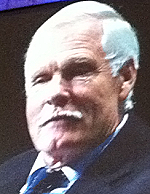


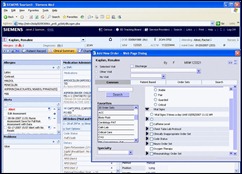

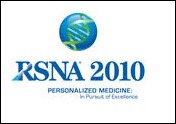

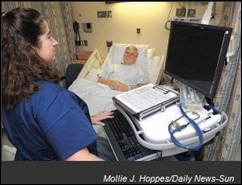







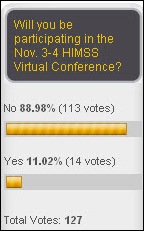

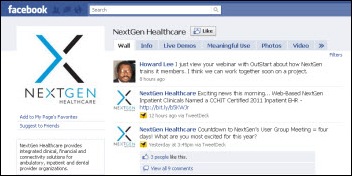
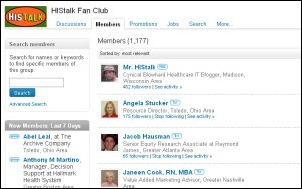
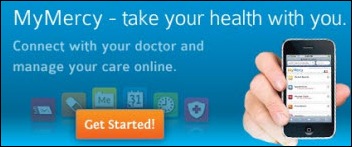

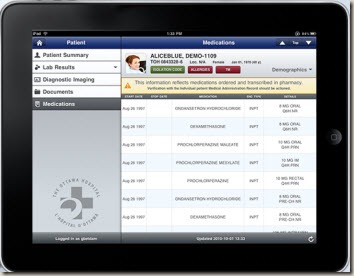
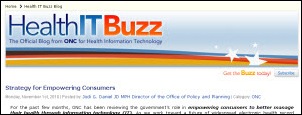
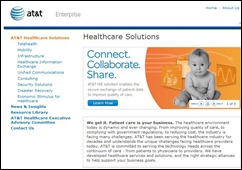
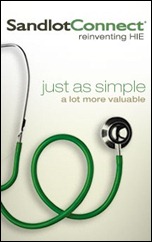




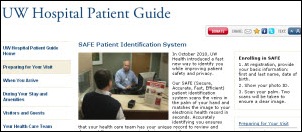


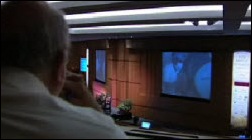




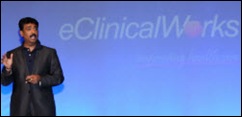
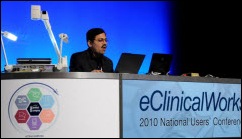





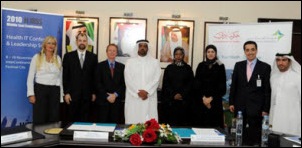
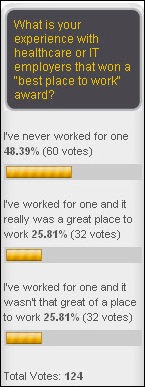


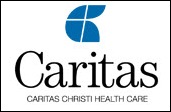
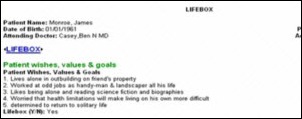



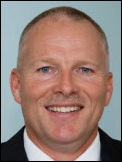
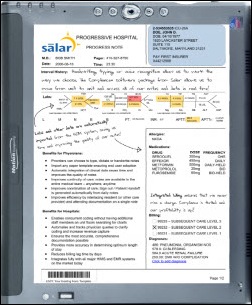

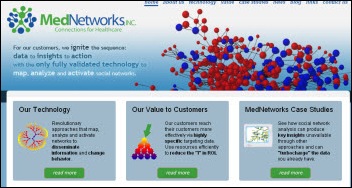
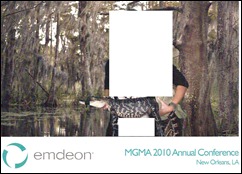



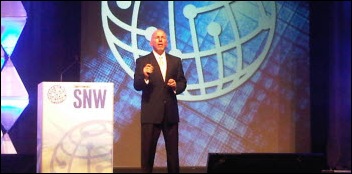




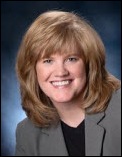

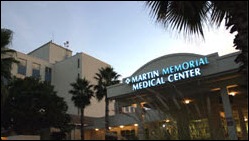


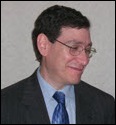
The CEO sentenced to jail for massive healthcare fraud will get pardoned in a week.